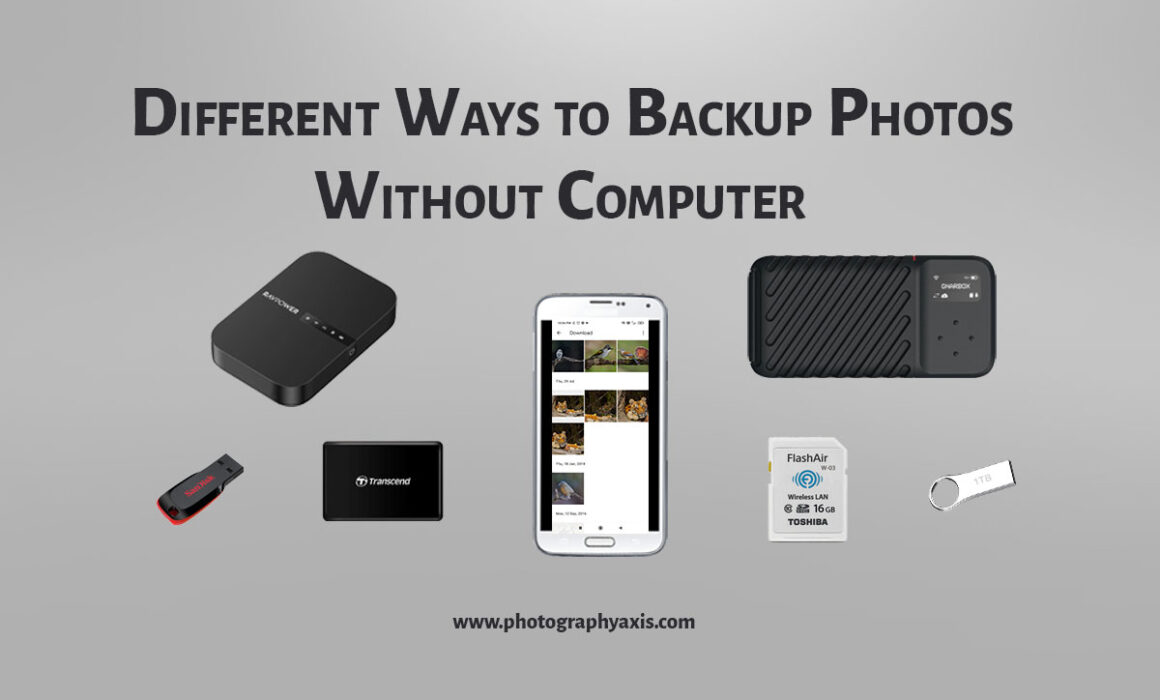11 Ways To BACKUP PHOTOS Without Computer[While TRAVELING]
When I am traveling for wildlife and bird photography, I don’t like to take my laptop with me. I carry multiple lenses and camera bodies with me. So, carrying a laptop will be a burden for me. I prefer to backup photos without using a computer,
So, if you are also looking for one, then you will find this article extremely useful. I will share 11 different methods to back up your images without using a computer when you are traveling for photography.
1. Dual Memory Card Slots in Camera
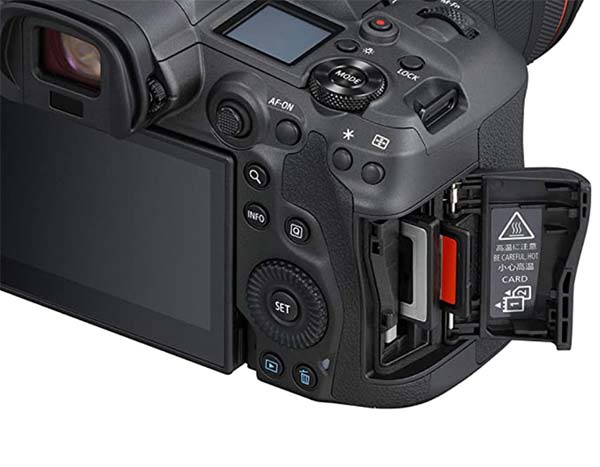
Many DSLR and Mirrorless cameras come with dual memory card slots. It can be identical slots or different ones. So, you can use one of the cards to record the actual capture and the other memory card as the backup. You can move the photos to the backup memory card whenever the actual shooting recording media is full.
Some cameras support simultaneous recording to both memory cards. But, I don’t recommend using that feature because it may affect the writing speed and can impact your high-resolution video recording or photoshoot in burst mode.
You can go for a memory card with an average read/write speed as the backup memory card. It will help you to buy memory cards with higher storage capacities for less price.
So, if your camera supports dual memory cards, then you can use this method to backup photos without a computer when you are traveling.
Cost: Additional Memory Card Cost
2. Use your Smartphone or Tablet
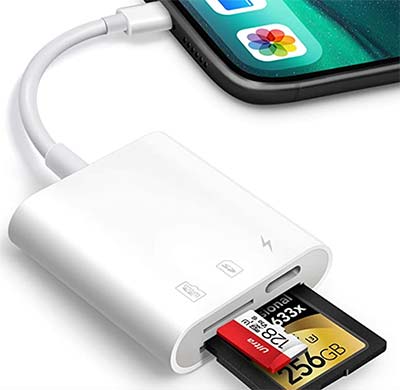
You can also copy the images directly from the memory card to your smartphone or tablet. In this case, your smartphone must support the OTG feature for file transfer.
You need to invest in a card reader that can be connected to the smartphone. All smartphones will have either a Type-C USB connector or a Micro USB port. So, you need to buy a card reader that can be connected to your smartphone.
You can insert the memory card into a card reader and connect it to the phone and transfer the images.
Cost: $10 (Card Reader)
3. Upload to Cloud Storage ☁️

You may not be having sufficient space in your phone to store all the images. In this situation, you can use cloud storage.
So, you can transfer the images to your phone in batches. You can push the images into the cloud through the phone. Some of the popular cloud storage options for photographers include Dropbox, pCloud, Apple iCloud, Box, IDrive, and Microsoft One Drive.
One issue with this method is that you need to have an internet connection with good speed. The RAW files captured using the camera will be of very large size. So, when you try to push multiple RAW and JPEG files, it will take a long time.
This solution may not be useful if you are traveling to a remote location. You won’t be able to get any internet connection in such places.
Cost: $0.99 per month to $20 per month (Depends on the service provider)
4. Use Wi-Fi SD cards
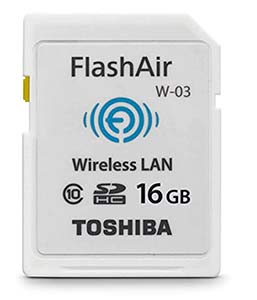
If your camera does not have Wi-fi capability, then you can add it by using a Wi-Fi SD card instead of the normal SD card. Thus, you can connect your smartphone’s Wi-fi to the SD card Wi-fi and do the photo transfer wirelessly for backup. So, the backup copies of the images will be created on the smartphone.
You can use this solution only if your camera uses an SD card for recording images.
Cost: $60
5. Use Micro SD card slots in Smartphone
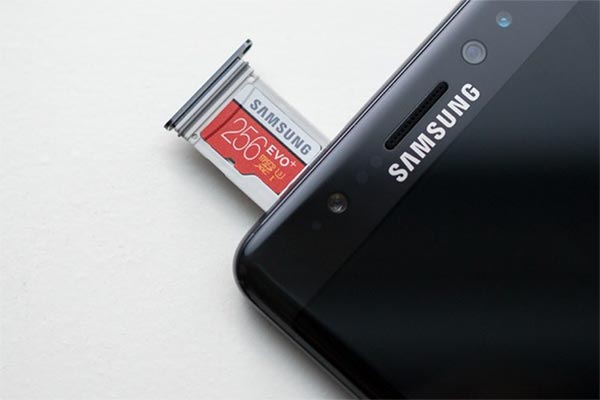 Nowadays, almost all Android smartphones come with a micro SD card slot to expand the memory capacity. You can make use of this feature in your smartphone to take the backup photos onto the micro SD card.
Nowadays, almost all Android smartphones come with a micro SD card slot to expand the memory capacity. You can make use of this feature in your smartphone to take the backup photos onto the micro SD card.
Connect the camera memory card to your phone using the card reader. Copy and paste the images from the camera memory card to the micro SD card in your smartphone.
You can invest in multiple micro SD cards if you prefer to use this method to take photo backups while traveling. You can invest in micro SD cards of higher capacities like 64 GB, 128 GB, & 256 GB.
Cost: Cost of the Micro SD card
6. Filehub from RavPower
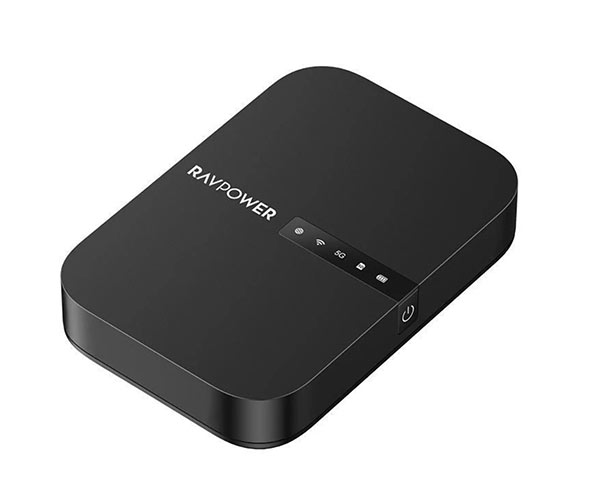
The Filehub from RavPower is another popular option used by many photographers to back up their pictures without using a computer. It is a handy device that is easy to carry.
This device comes with an inbuilt battery, Wifi, Ethernet port, SD card slot, and USB port. So, you can plug in your hard disk and the SD card of your camera to the Filehub. Switch on the device and connect the wireless access point to your smartphone.
Now, you can see the files on the SD card and the external hard drive. So, you can move the photos and videos to the hard drive without using a computer.
Cost: $40 (New version AC750)
7. Gnarbox 2.0 to Backup Photos without Computer
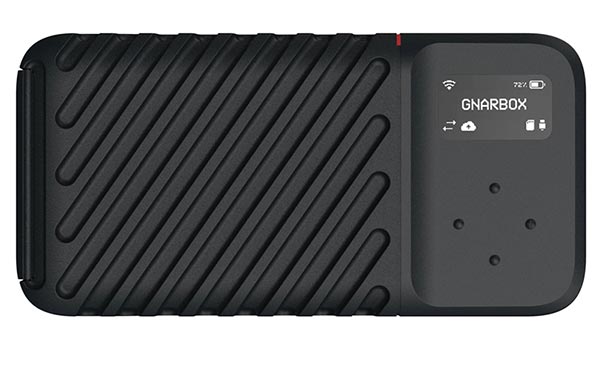 Gnarbox is one of the best and the costliest options to back up your images without using a computer. The latest Gnarbox 2.0 comes in 3 options, 256 GB, 512 GB, and 1 TB. They are priced at $499, $699, and $899 respectively. This device is like a small computer.
Gnarbox is one of the best and the costliest options to back up your images without using a computer. The latest Gnarbox 2.0 comes in 3 options, 256 GB, 512 GB, and 1 TB. They are priced at $499, $699, and $899 respectively. This device is like a small computer.
Compared to other options, the Gnarbox 2.0 comes with many useful features. There is an inbuilt SD card reader where you can insert your camera SD card and transfer photos to Gnarbox. It has got a rugged design.
It comes with Type-C USB ports. You can use it for charging and for connecting to other external hard drives.
If your camera supports a different type of memory card, not an SD card, you can attach the card reader to the Type-C port to transfer the images.
The rugged design of this device ensures protection against accidental drops. The weather sealing feature ensures protection from rain and water spills.
If you are ready to spend this amount, then the Gnarbox is a really good solution.
Cost: $900 (For 1 TB Gnarbox 2.0 SSD version)
8. Use High Capacity USB Pen Drives
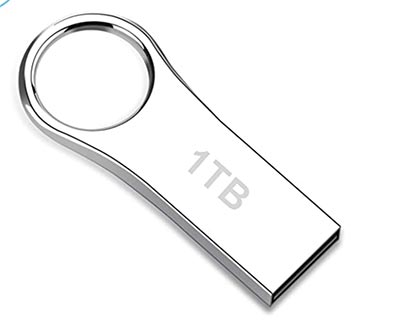
If you are not interested in carrying or using the portable external hard drive then you can invest in a USB pen drive of higher capacities instead.
In the above-listed options, wherever I have mentioned using an external hard drive, you can replace it with a USB pen drive. Thus, you can avoid carrying a portable hard drive while traveling.
Now, you can get USB pen drives of high storage capacities like 128 GB, 256 GB, 512 GB, & even 1 TB.
Cost: Cost of the USB Pen Drive
9. Wireless Portable SSD with inbuilt card reader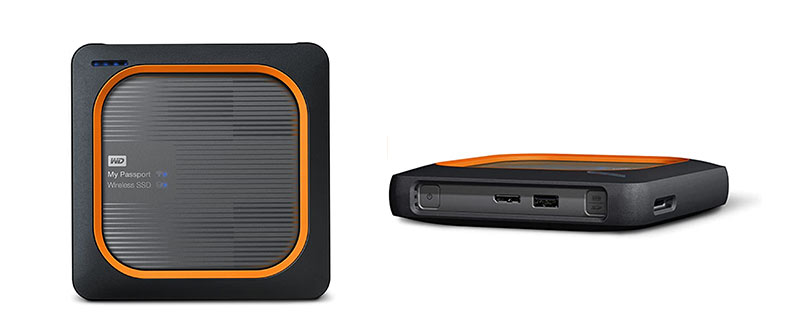
Western Digital’s My Passport Wireless SSD is a good example of an SSD that supports reading SD cards and comes with an inbuilt battery. The wireless feature of this device lets you view photos and videos on your tablet or smartphone.
You can use it to read your SD card directly. You can also use other cards with this device with the help of card readers. The SSD supports faster viewing and streaming of photos and videos on the smartphone.
It is available in 4 variants, 250 GB, 500 GB, 1TB, and 4 TB.
Cost: $250 (1 TB Version)
10. Wireless Portable Hard Drive with inbuilt card reader
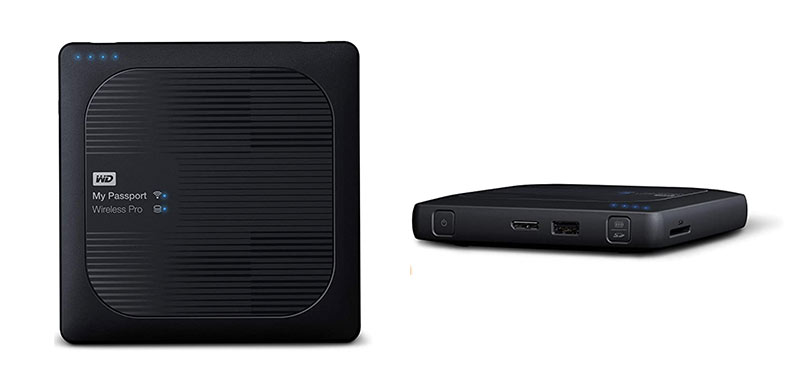
If you are looking for a less costly option than the Wireless SSD with a card reader, then you can go for Western Digital’s My Passport Wireless Pro. it is a good example of a hard drive that supports reading SD cards and comes with an inbuilt battery. So, you can insert your SD card from the camera to this hard drive. The wireless feature will allow you to view the images on your smartphone or tablet. Thus, you can select and copy the required images to the hard drive.
It comes with a normal disk drive. So, the transfer speed will be less when compared to the SSD version.
You can get 1 TB, 2 TB, 3 TB, and 4 TB versions. So, choose according to your storage requirement. The cost of these drives will be less when compared to their SSD counterparts.
Cost: $168 (1 TB version)
11. Use Raspberry Pi
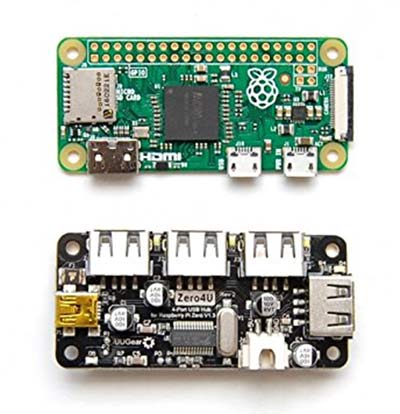
If you want to use a geeky way to back up your images, then you can invest in a Raspberry Pi. Dmitri Popov, the Linux coder, has developed a script that will automatically push the photos in the memory card to the hard drive. Download this script and load it into your Raspberry Pi.
You can use a Raspberry Pi Zero along with a Zero 4U 4-Port USB hub as the solution. You can load the script in the Raspberry Pi module. Switch on the Raspberry Pi. Connect the portable hard disk, and the memory card using the card reader. The Raspberry Pi will automatically initiate the transfer of files from the SD card to the hard disk. Duplicate files will not be copied. No changes will be made to the files on the hard disk and the SD card.
It is a compact solution since you can stack the two boards one above the other. You can also use other Raspberry Pi boards.
Cost: $20 ($10 for Raspberry Pi Zero & $10 For Zero 4U 4-Port USB hub)
Conclusion
Now you know all the possible methods to transfer. Use any of these methods to get a backup of your photos while you are traveling without using a computer. The options which I have shared come in a wide price range. So, you can easily select one that meets your budget and requirements.

